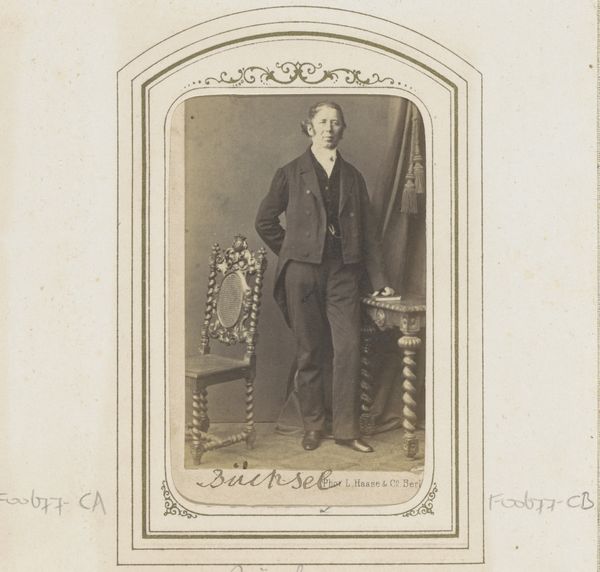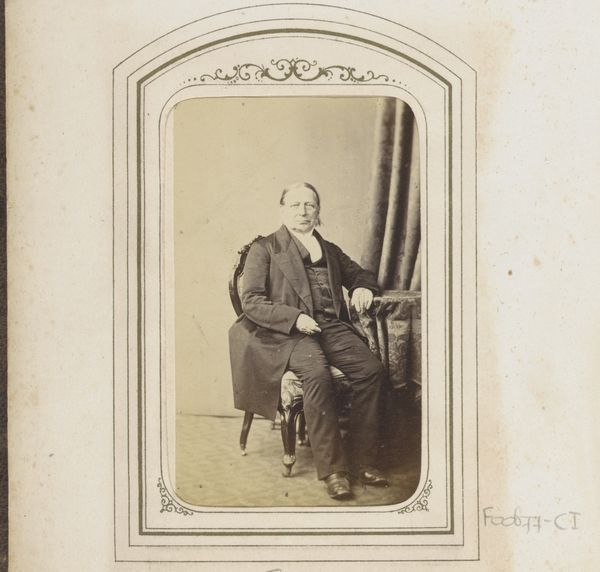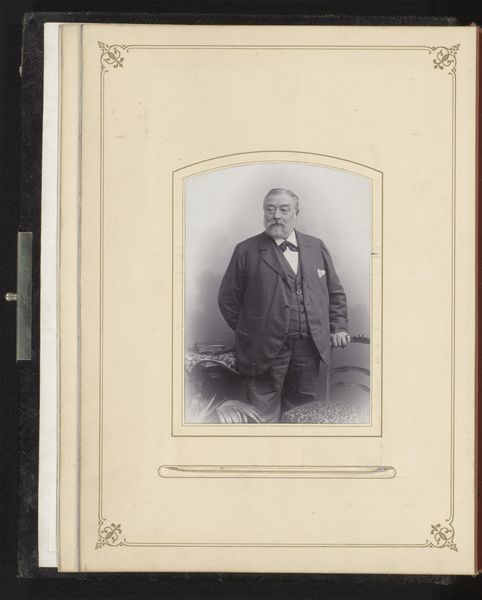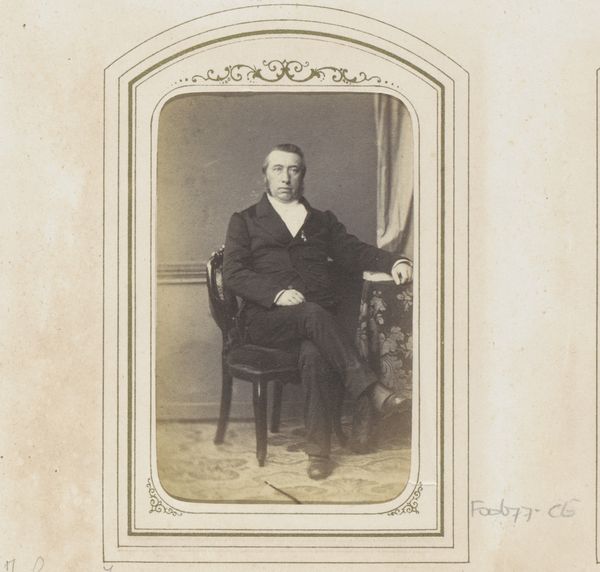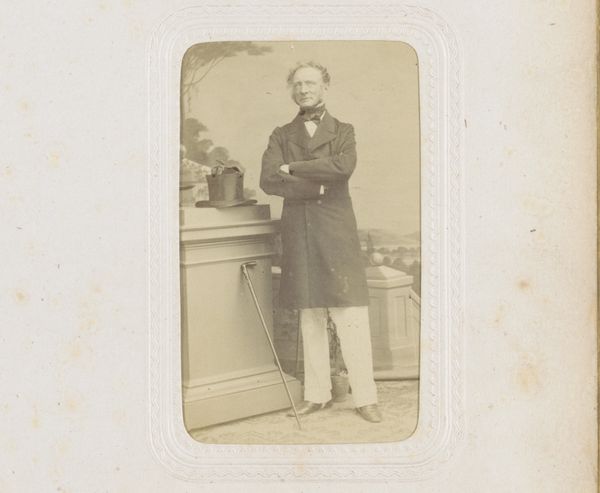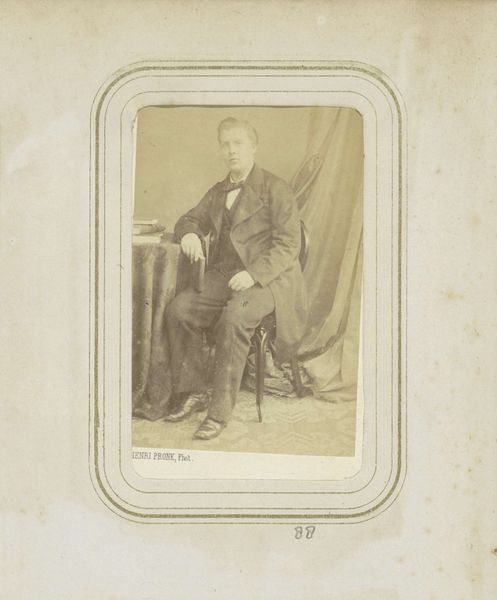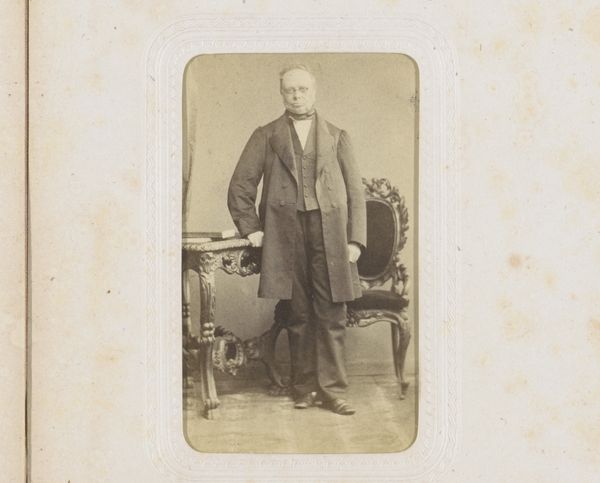
Dimensions: height 85 mm, width 53 mm
Copyright: Rijks Museum: Open Domain
Editor: Here we have a daguerreotype titled "Portret van Ernst Wilhelm Hengstenberg," created by Leopold Haase & Co. sometime in the mid-19th century. The subdued tones and rigid pose create a somewhat austere, formal feeling. What can you tell us about the aesthetic considerations here? Curator: Focusing on its formal qualities, consider the arrangement of tones. The artist employs a strategic distribution of light and shadow, highlighting the subject's face while his dark clothing almost merges with the chair, drawing the eye upwards. How would you interpret the visual relationship between the subject and the props included within the image? Editor: It almost seems like a stage production, he is an actor on a stage? The curtain in the background and the ornate table beside him almost feel like they are framing him, creating visual interest. Curator: Indeed, the setting enhances the subject. But what does the sharp focus on texture—the man’s garments, the table's carving—contribute, juxtaposed against a muted backdrop? Editor: I suppose that detail invites the viewer to dwell on tangible realities, giving weight to the sitter’s presence despite the ephemeral nature of a photographic image. The texture creates a rich surface and it gives a clear view of the past? Curator: Precisely. Note, too, the carefully constructed balance and symmetry in its composition. Reflect on what these formal elements reveal. Editor: This photograph really does use simple form to elevate what would seem to be simple content into a really sophisticated statement of form and function. I think I can appreciate this more!
Comments
No comments
Be the first to comment and join the conversation on the ultimate creative platform.
